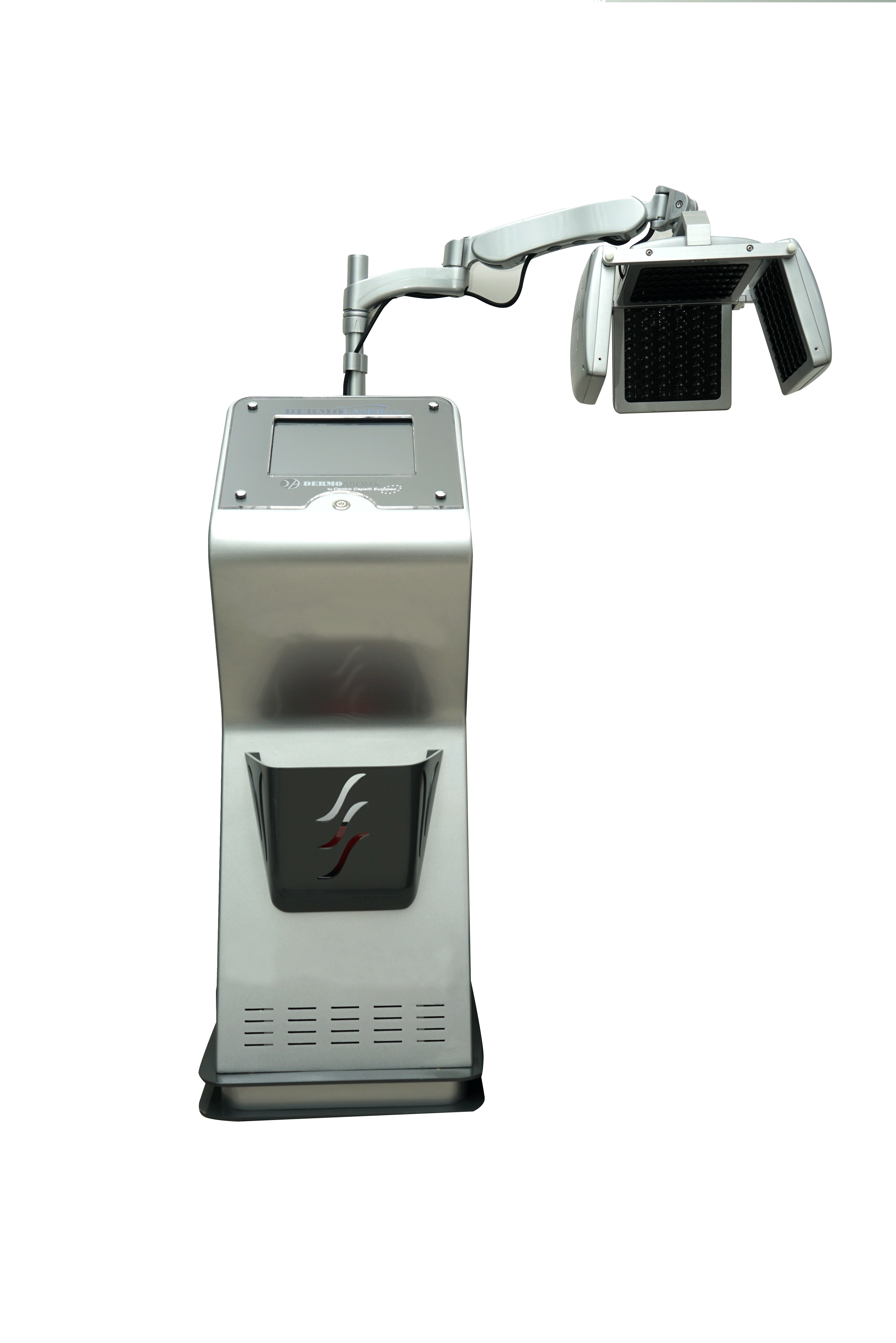laser hair therapy is yet another treatment that later found its place as an effective treatment post hair transplants to accentuate the results. The FDA approved treatment is referred to in various names such as soft laser, red light laser, cold laser, and biosimulation. Laser hair therapy was initially a treatment used to treat various categories of alopecia, with androgenic alopecia being the significant focus.
Laser hair therapy
The technique relies on radiations of heat and light to trigger a cascade of metabolic activity in follicular units that favors growth and prosperity. The effect of treatment hamstrings the progression of symptoms that result from male and female androgenic alopecia (pattern baldness) and various other categories of hair loss.
The technology utilizes overhead panels installed with red light-emitting diodes. The wavelength of the light emitted is between 630 and 670 nanometers, which allows it to penetrate the scalp and reach the target. What occurs on a molecular level is a lot more intricate. The photons emitted by the diodes, act primarily on the cytochrome C oxidase, which in response triggers the production of ATP, and in turn, cyclic AMP. Cyclic AMP is then burnt out as fuel by the cell to stimulate a cascade of cellular events and metabolic processes to promote proliferation. Nitric oxide is a byproduct of the process and helps to facilitate vascularization in the treated area, to provide follicular units with critical nutrients and oxygen.
DHT, a more aggressive version of testosterone is the main character and cause of the onset of androgenic alopecia symptoms. The aggressive derivative of testosterone, triggers the premature miniaturization of hair roots, leading to irreversible hair loss.
How laser hair therapy counteracts the progression of the condition, is very interesting. The treatment directly tackles the source of the problem, in this case, DHT. The laser penetrates the scalp to down to the roots to break down DHT and prevent its accumulation and by extension, adverse effects on the life of hair. In addition to its monumental effects on the deterioration of DHT, laser hair therapy alters the hair growth cycle.
The anagen phase, the telogen phase, and the catagen phase are what constitute a hair cycle. The first refers to the period of active growth, the second resting period, and the last refers to the hair shedding period. Laser hair therapy can delay the catagen phase and elongate the anagen and telogen phases. Coupled with healthy lifestyle changes and treatment of the underlying cause, laser hair therapy can treat hair loss as long as the follicular unit is not damaged

Effect of laser hair therapy on hair transplants
Laser hair therapy has no effect on the revascularization process, so survival rate will remain at the standard 70%. However, the treatment does stimulate vascularization, and therefore, will increase circulation superseding revascularization. The effect on healing rates will be 20-30% faster than is normally expected. However, while OxyCure remains top tier as an adjunct treatment, laser hair therapy can be a separate treatment for hair loss as well despite not being top-notch as an adjunct treatment.


